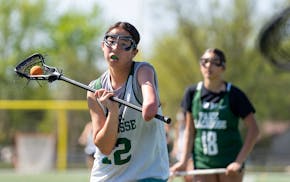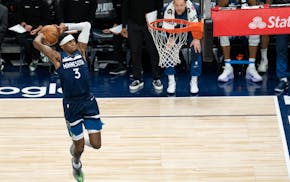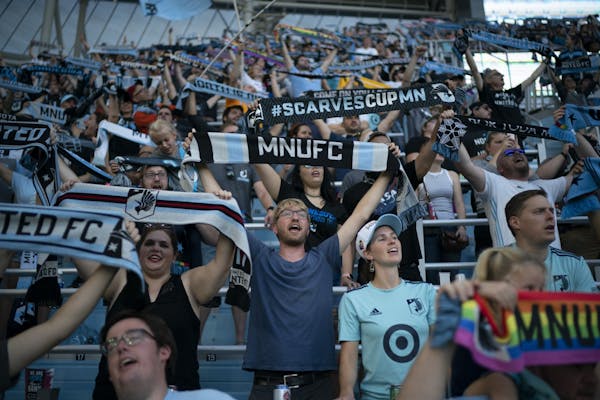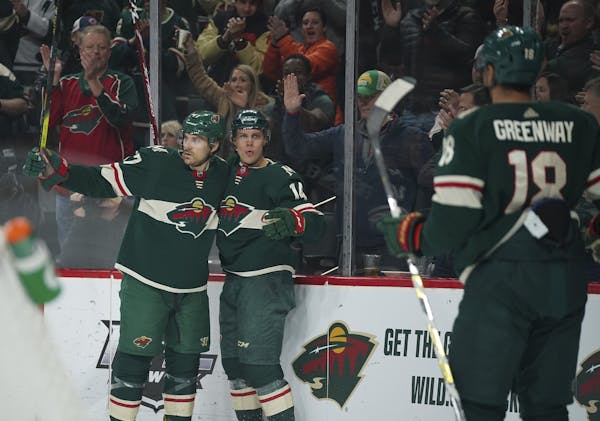The fountains dance in Kansas City when the Royals win a game, and a steam locomotive roars to life in Houston every time an Astro hits a home run. Bernie Brewer cavorts down a slide during big moments in Milwaukee, and in Chicago, the White Sox' scoreboard metaphorically, if not literally, "explodes."
Minnesota? When the crowd is going crazy at Target Field, attention is inevitably focused on a colossal structure in center field, where two symbolic uniformed ballplayers slowly and sincerely … shake hands.
"Hey, we're Midwestern," Twins President Dave St. Peter said of Minnie & Paul's signature, um, celebration. "It's a traditional, humble Minnesota approach."
And it's a traditional, humble Minnesota logo, too, barely more than a doodle from the pen of its creator, according to the Twins' chief historian. Ray Barton was an independent commercial artist who accepted freelance assignments from local ad agencies when the Twins, then the Washington Senators, were preparing to move west for the 1961 season.
The team was looking for artwork to be used on souvenir items at Metropolitan Stadium, and Barton submitted a simple cartoon featuring a couple of generic ballplayers with disproportionate heads, big noses, short legs and goofy smiles, shaking hands over a small river.
"He told me he considered it nothing more than a sketch, really. Not something he spent much time on, not his best work," Twins curator Clyde Doepner said. "… He just thought they would use it on soda cups or something."
Drawing that handshake was a quick and easy project, and for his efforts, Barton received … well, not much more than a handshake.
The fee: $15, maybe the best couple of bucks the legendarily stingy Calvin Griffith ever spent.
Griffith, who inherited the baseball franchise from his uncle and adopted father, Clark Griffith, had leveraged St. Paul and Minneapolis against each other as he looked for a new home for the Senators, hinting that he would bring the team to whichever city built a suitable ballpark. But once he was sold on the expansion of Metropolitan Stadium in Bloomington, Doepner said, Griffith feared that the rivalry between the Twin Cities might be strong enough to cost him customers.
"Cal wasn't sure how strong the feelings were. He was worried that St. Paul residents would feel like it was a Minneapolis team, or vice versa, and they would stay away," Doepner said. "He wanted to call the team the Twin Cities Twins, to draw fans from both sides."
Major League Baseball rejected the name as too generic, but Griffith defied the league by putting it, in the form of an interlocking "TC", on the team's caps, where it remains to this day.
And when he saw Barton's caricature, he seized upon it as a peacekeeper. The original design included matching "MT" logos on the sleeves, but Griffith had them changed to "M" and "StP" to make the friendliness explicit: Whichever side of the Mississippi River you lived on, this was your team.
Minnie and Paul, after all, were great friends.
Almost 60 years later, Minnie and Paul endure, a throwback that even survived a 15-year uniform redesign that temporarily replaced the "TC" on Twins caps with an "M." Even as Griffith's own legacy undergoes reevaluation — a statue of the original Twins owner was removed from Target Plaza last week — Minnie and Paul somehow remain.
In large part — extra large, actually, about 46 feet tall — that's because they now dominate fans' views at Target Field. For all the modern park's features, what people notice and remember, what stands out on TV, are the gigantic characters glowing in neon and looming above center field.
"We brainstormed for ways we could make the park unique, for a signature element that would make Target Field instantly recognizable," St. Peter said. "That sign didn't come to us until we were about halfway through. It was an add-on, something that the Pohlad family [who now own the team] paid for themselves."
The team was trying to make the park uniquely Minnesotan, but Target Field's eight-acre site, second-smallest in the majors, complicated those plans.
"For a long time, we considered water options. Minnesota is the Land of 10,000 Lakes, Minneapolis is the City of Lakes, we wanted to do something to represent lakes," said Patrick Klinger, Twins' vice president of marketing when the park was being built. An outfield setting with a water element, like those of Anaheim Stadium or Coors Field in Denver, was contemplated, Klinger said, "but unfortunately, we only had room for puddles."
Klinger proposed using the logo, and "the Pohlad family loved the idea," St. Peter said. "We presented a few size options, and Bob Pohlad basically said, 'Go with the biggest one.' "
The Twins revealed their plans to Barton, who loved that his off-the-cuff illustration, featured on T-shirts, bobbleheads and all sorts of souvenirs over the years, would be immortalized so prominently in the new ballpark. But Barton never saw it — he died of cancer on April 18, 2010, just six days after Target Field's first Opening Day.
"I know he was happy about it," Doepner said. "It's a shame he didn't get to Target Field, but he took pride that such a small project for him had such a history. Minnie and Paul have been worn by Twins fans for many generations. That's pretty good."

One-handed lacrosse player Hollen Thompson an inspiration on the field

Zeroed in from the start, Wolves thrash Warriors in Game 2 and even playoff series

Stephen Curry says he knows patience will be required when dealing with hamstring injury

Souhan: Pondering Ant, whose injuries are no worry but whose shooting is a large concern


